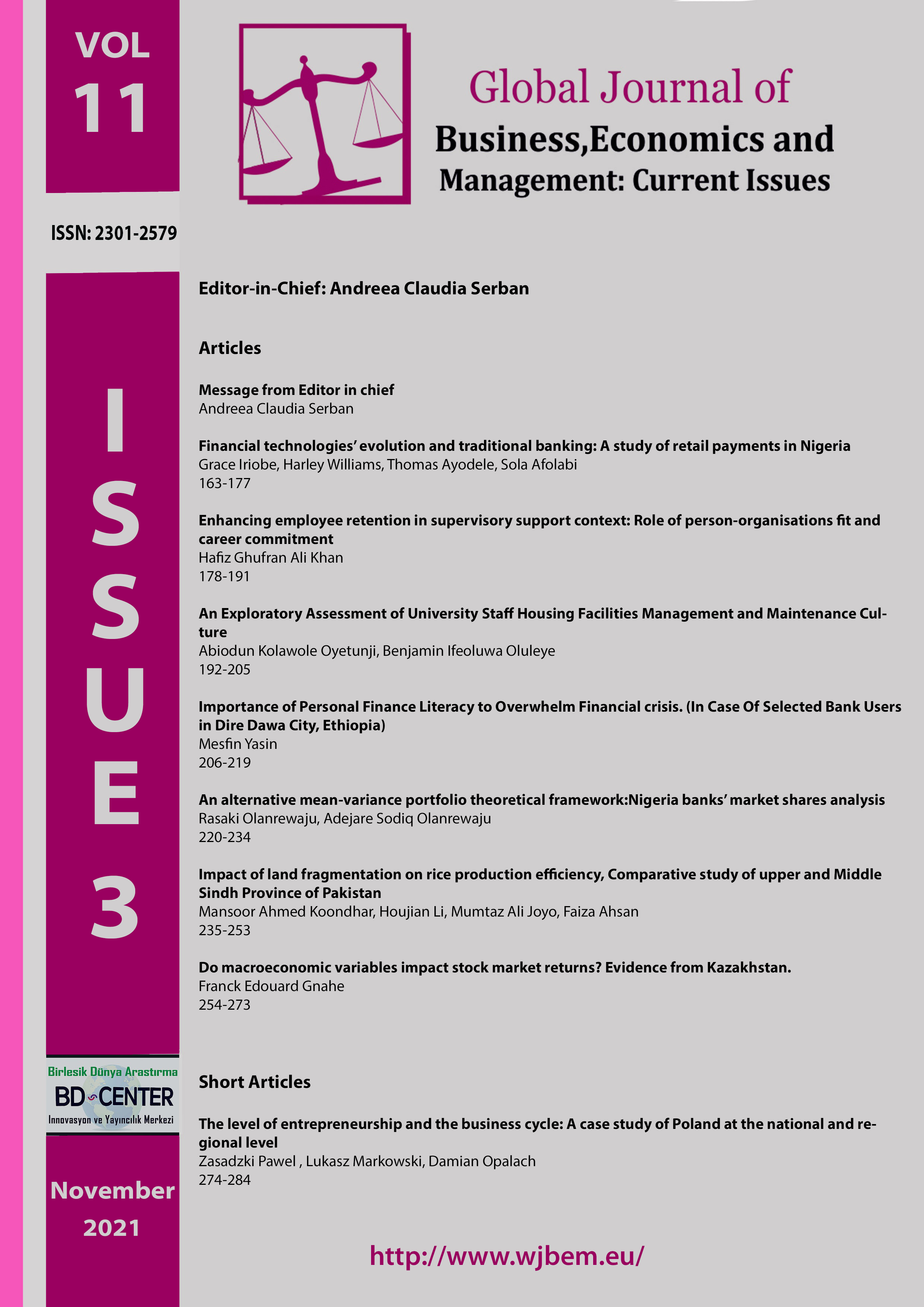Impact of land fragmentation on rice production efficiency, Comparative study of upper and Middle Sindh Province of Pakistan
Main Article Content
Abstract
Abstract: Impression of this study is to investigate the correlation of land fragmentation and rice production efficiency into two different major rice cropping zones, which mostly at middle and upper part of the Sindh province, Pakistan. For this study, randomly data of 450 rice growers were collected from 5 major growing districts (Dadu, Naushahroferoze, Sukkur, Larkana and Shikarpur) of Sindh province Pakistan, 432 respondents were analyzed out of 450, remaining 18 samples found an error in data due to auto-generated results. As for the empirical results Cob Douglas and censored normal Tobit model were analyzed by using SPSS and E-views. As for as results of Cob Douglas production function opined that the production can be increased owing to the increase in family income, ploughing, planking and irrigation also confirm that the 1% reduction in land rent, temporary labor with fertilizer usage such as; urea, DAP and chemical spray would causes the production increase in middle part of the Sindh, followed by the upper Sindh rice production can be raised by the land rent increment, permanent labor ploughing, planking, seed rate and fertilizer; urea and NP, just need to reduce 1% appliance on irrigation. In addition, the results of the censored Tobit model suggests that there is possibility to increase rice production efficiency by increasing the general characteristics of rice growers such as; age, education, experience, farm size, health of farmers, market availability near to farms, extension service and school, producer efficiency. The rice production can also be increased by the decreasing land fragmentation and distance from homestead to farm in middle Sindh. When the production efficiency would be increased in upper Sindh as compare to the middle Sindh gradually by increasing age, experience, land rented in, shared out land, farm size and availability of the market near farm, same variables for land fragmentation and distance from homestead to farm has negative coefficient impression. The results policy suggested the assurance of land fragmentation and distance from homestead to farm has significant correlation with rice production. Therefore, government may revise land reform policies with its land consolidate; by this farmers may adopt modern agro-based technologies easily and resultantly to increase rice production and ultimately help to reducing poverty scale.
Keywords: Rice, production, fragmentation, Policy and Sindh.
Downloads
Article Details

This work is licensed under a Creative Commons Attribution 4.0 International License.
The Global Journal of Business Economics and Management: Current Issues is an open-access journal. The copyright holder is the author or authors. Licensee: Birlesik Dunya Yenilik Arastirma ve Yayincilik Merkezi, North Nicosia, Cyprus. All articles can be downloaded free of charge. Articles published in the Journal are Open-Access articles distributed under the CC-BY license [Attribution 4.0 International (CC BY 4.0)].

